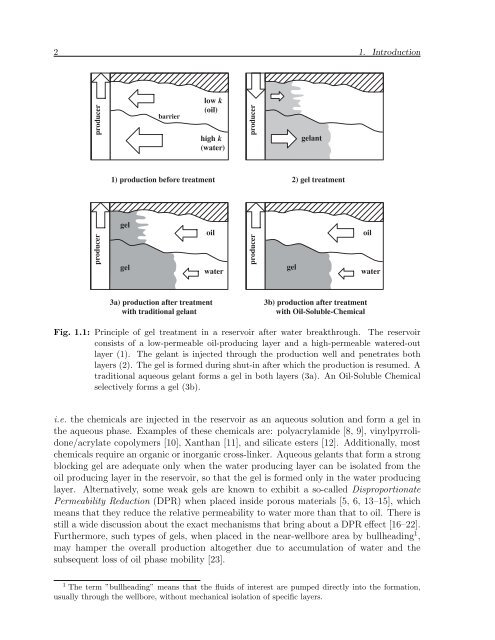Untitled - Technische Universiteit Eindhoven
Untitled - Technische Universiteit Eindhoven
Untitled - Technische Universiteit Eindhoven
- No tags were found...
You also want an ePaper? Increase the reach of your titles
YUMPU automatically turns print PDFs into web optimized ePapers that Google loves.
2 1. Introductionproducerbarrierlow k(oil)high k(water)producergelant1) production before treatment 2) gel treatmentproducergelgeloilwaterproducergeloilwater3a) production after treatmentwith traditional gelant3b) production after treatmentwith Oil-Soluble-ChemicalFig. 1.1: Principle of gel treatment in a reservoir after water breakthrough. The reservoirconsists of a low-permeable oil-producing layer and a high-permeable watered-outlayer (1). The gelant is injected through the production well and penetrates bothlayers (2). The gel is formed during shut-in after which the production is resumed. Atraditional aqueous gelant forms a gel in both layers (3a). An Oil-Soluble Chemicalselectively forms a gel (3b).i.e. the chemicals are injected in the reservoir as an aqueous solution and form a gel inthe aqueous phase. Examples of these chemicals are: polyacrylamide [8, 9], vinylpyrrolidone/acrylatecopolymers [10], Xanthan [11], and silicate esters [12]. Additionally, mostchemicals require an organic or inorganic cross-linker. Aqueous gelants that form a strongblocking gel are adequate only when the water producing layer can be isolated from theoil producing layer in the reservoir, so that the gel is formed only in the water producinglayer. Alternatively, some weak gels are known to exhibit a so-called DisproportionatePermeability Reduction (DPR) when placed inside porous materials [5, 6, 13–15], whichmeans that they reduce the relative permeability to water more than that to oil. There isstill a wide discussion about the exact mechanisms that bring about a DPR effect [16–22].Furthermore, such types of gels, when placed in the near-wellbore area by bullheading 1 ,may hamper the overall production altogether due to accumulation of water and thesubsequent loss of oil phase mobility [23].1 The term ”bullheading” means that the fluids of interest are pumped directly into the formation,usually through the wellbore, without mechanical isolation of specific layers.
















